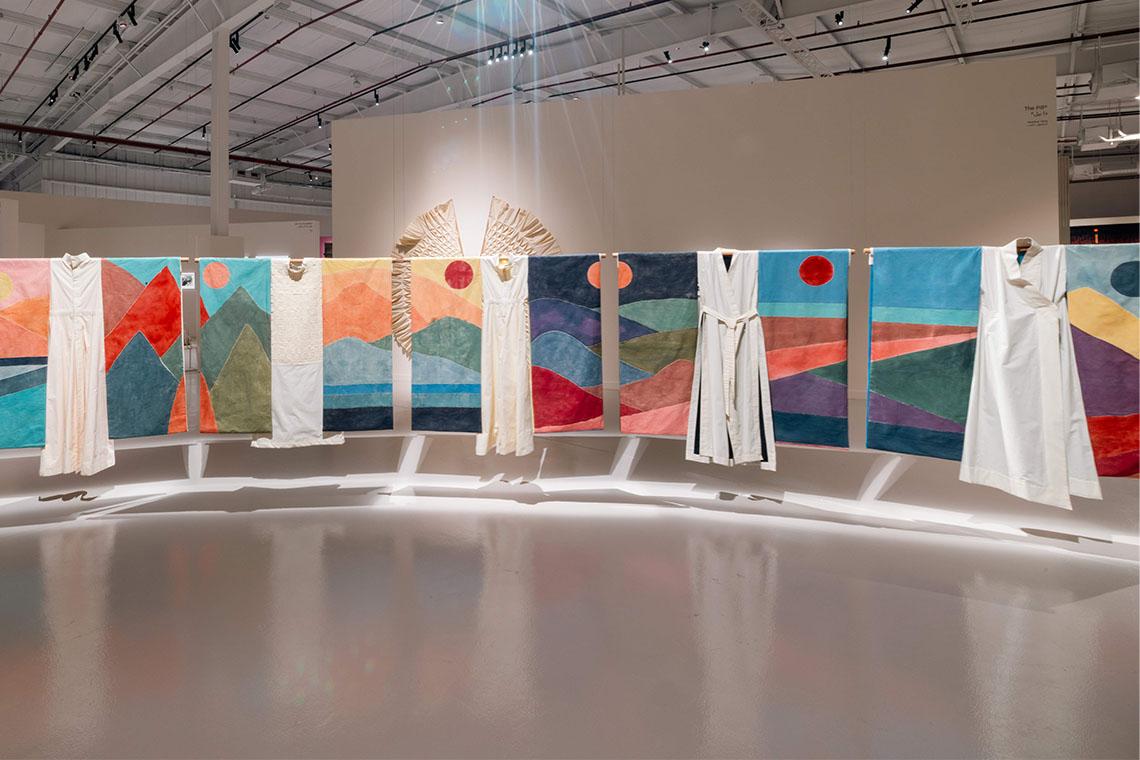The inaugural Art Week Riyadh, based in the JAX District and extending outwards across the rest of the city, is a new model that makes the case for innovation.
The undeniable buzz of the current Saudi art scene received a further boost this week by the inaugural edition of Art Week Riyadh, an initiative of the Ministry of Culture’s Visual Arts Commission. Speaking to Canvas, Dina Amin, CEO of the VCA, explained how “We wanted an art week that moved away from the traditional models to create our own [event] as a response to what we want and need at this moment in Saudi Arabia.”
Openly described by Amin as being “experimental” in the context of the arts in Saudi Arabia for its efforts to connect with the art scene outside of institutions or large organised events like Biennials, Art Week Riyadh sees much of the Saudi capital activated by a variety of arts-related events. From exhibitions and the opening of art collections and institutions through to gallery and studio visits, as well as talks and workshops, the opportunities for public engagement have arguably never been greater.
Large art events worldwide can sometimes seem out of reach to local people – think Frieze and Art Basel – but the headquartering of Art Week Riyadh in JAX, in the revamped historical area of Diriyah, already an established recreational hub for Riyadhis, has helped reinforce the appeal of the new event to audiences beyond the usual suspects.
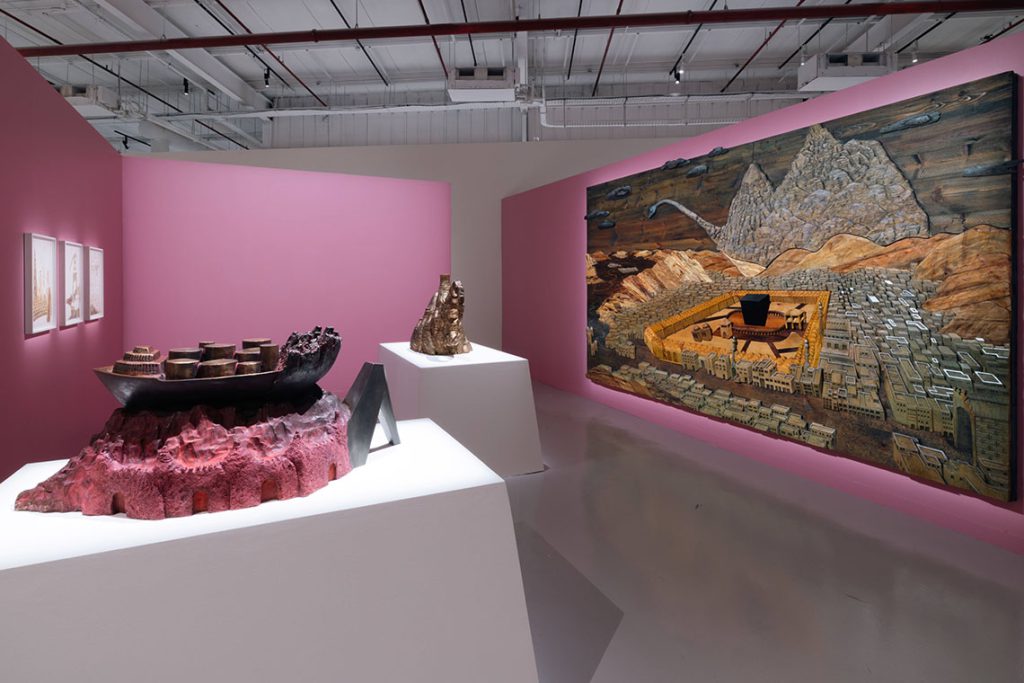
The main exhibition at JAX, At The Edge, is curated by artistic director Vittoria Matarrese with assistant curators Victoria Gandit Lelandais and Basma Harasani, while the public programming was conceived by Shumon Basar. Across three themes, ‘Everyday Life’, ‘Landscapes’ and ‘Motifs’, At The Edge brings together more than 45 galleries from around the world. Somewhere between art fair and institutional exhibition, At The Edge succeeds in taking the best elements of both formats. Each gallery presentation seems to be in conversation with its neighbour, with smaller, more intimate works providing a counterweight to more ambitious pieces, while the presence of gallerists and artists feels more inviting in the wide open space as visitors move freely around the exhibition. Established artists such as Ahmed Mater and Manal AlDowayan are on full display, as are a range of other Saudi stars including Mohammad AlFaraj, Sarah Brahim and Sarah Abu Abdallah.
The depth and breadth of contemporary Saudi art is astutely placed in conversation with art from around the MENASA region. The focal opening piece by Kader Attia, Le grand miroir du monde (2017), showcases these connectivities, as does the solo presentation by Wael Shawky, whose painted candyfloss pink walls are striking in their originality and provide the backdrop to the artist’s ongoing series of work, The Gulf Project Camp. Focused on the history of the Arabian Peninsula from the seventeenth century to today, it maps the region’s development and urbanisation by delving into the histories of the local ruling families.
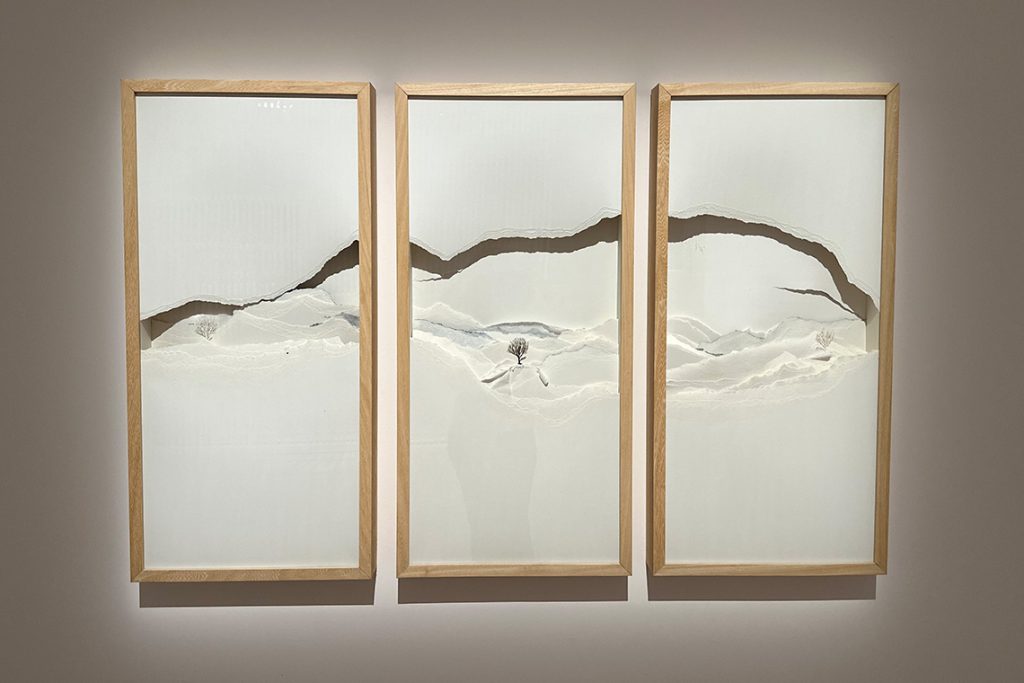
Among the emerging names, the Greek artist Nefeli Papadimouli, represented by Istanbul-and Paris-based THE PILL®, stands out as one of the most unexpected and delightful finds in At The Edge. The former architect-turned-artist’s Dream Coat (2023–24), consisting of kimono-esque garments hung across the central room of the exhibition and overlain with colourful Etel Adnan-style horizons, taps into the heart of Art Week’s overarching theme, that of liminal spaces, embodied in the title At The Edge. Matarrese has described the artist as a “game-changer, integrating the fabrics in such a way that she inhabits these landscapes”.
This sense of anchoring in the landscape is echoed by the nearby Jordanian gallery, Wadi Finan, with a series of abstracted multimedia paintings of landscapes by Palestinian-Jordanian artist Raya Kassisieh, whose work is also currently on view at the Islamic Arts Biennale in Jeddah.
Of particular note is the prominence of North African galleries in At The Edge, with the Tunisian gallerist Aïcha Gorgi noting the importance of giving space to emerging names from the region at such events. Three Tunisian artists feature in a polished yet impactful presentation, a series of works consisting of thickly layered and torn paper by Najah Zarbout, her small olive trees effortlessly drawing people in for a closer look while serving as a subtle reminder of the identity politics at play in the Arab world. “Arab identity needs to be broader,” continues Gorgi. “It’s important that we are here. This is the moment for the Arab world to come together, from Algeria to Tunisia, from Libya to Morocco and all the way to Saudi Arabia, as we have a common language and strength”.
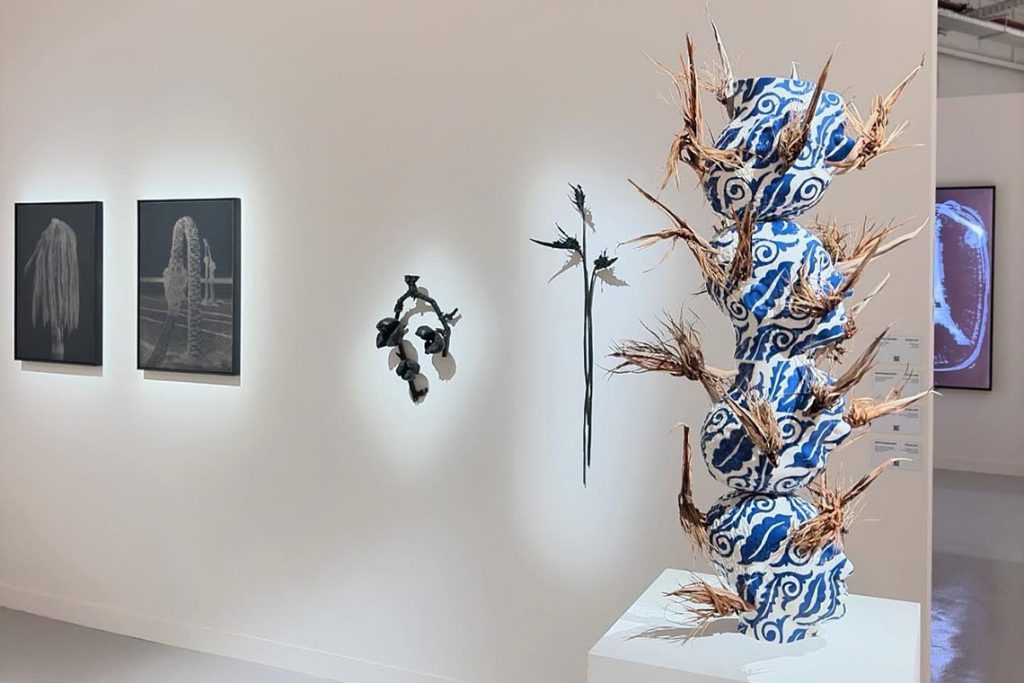
Mehdi-Georges Lahlou, of Paris-based Galerie La La Lande, presented two works from his series Nature Morte (2023), which sees outlines of ghostly palm trees on a black background created from ashes collected during the artist’s travels. Themes of identity and its connection to the landscape recurred throughout the exhibition, apparent too in the charcoal palms of Saudi artist like Mohammad AlFaraj, and serving as a clear unifying thread for artists from all over the MENASA region.
Speaking about Art Week Riyadh and the efforts made to curate the exhibition’s theme while bringing together artists from all over the region, Ilyes Messaoudi, Galerie La La Lande’s founder, emphasised the curatorial team’s desire to “break this notion of borders”. With the selection of works highlighting the ability of artists to expand far beyond the confines of their national and cultural identities, the idea of borders and associated limits on freedom, creative or otherwise, has rarely seemed so artificial.
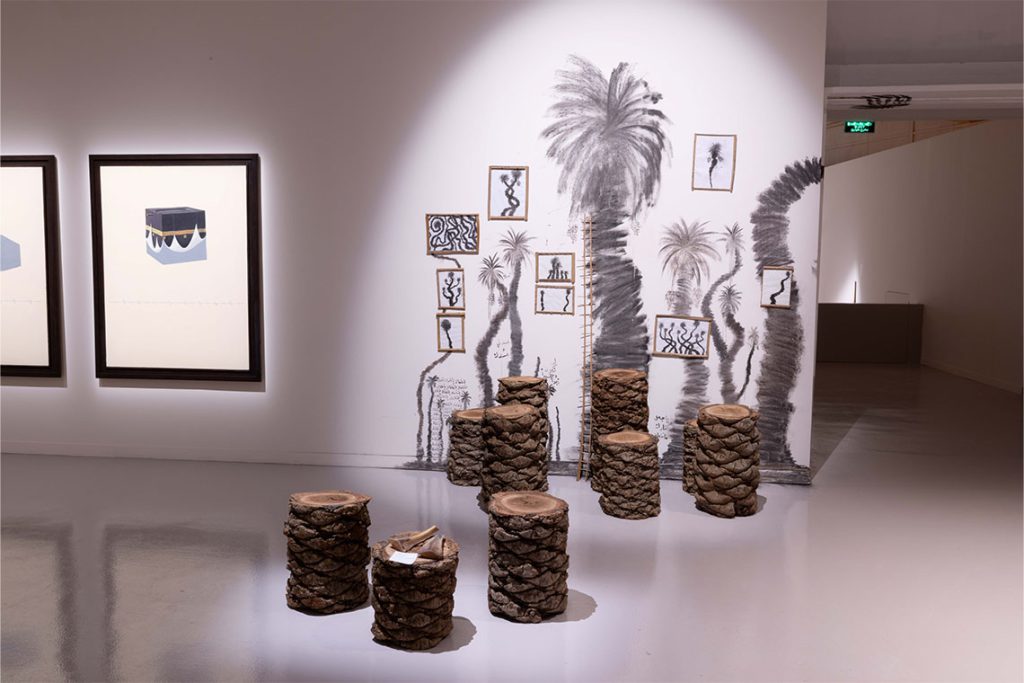
This spirit of breaking boundaries is reflected in the ambition to involve as many parts of Riyadh’s cultural scene as possible in the art week. Almousa Center, a former mall, was once a focus of the nascent Saudi art scene, a place for artists to gather and create. The space, now home to a number of galleries alongside more traditional shops (think tailors and oud aplenty) feels like a glimpse into what art in Saudi Arabia was like many decades ago. At Almousa, galleries like Jhunna Gallery put on their own curated displays in celebration of Art Week, with names such as Tagreed Darghouth and Meriem Bouderbala placed alongside more emerging talents like Souad Abdelrasoul. Ahlam Gallery’s exhibition of Saddek Wasil’s sculptural work exemplified a rootedness in the local landscape, with many of his pieces the result of repurposed fragments of demolished homes in the artist’s native Mecca, acting as an ode to the past in a rapidly shifting world.
The desire to connect more deeply feels like the most widely received message of Art Week Riyadh, whether that be with the multitude of cultural actors in the city and country, or through efforts to dialogue with the wider region, as well as further afield. “We want to reach many different communities, from the person next door to the person on the other side of the world,” affirms Amin. “We are here for everyone. The doors are open.” This sentiment, echoed by all those participating, underlines the value of Art Week Riyadh – perhaps an experiment for the Saudi art scene amid rapid social and cultural shifts, but surely one worth embarking upon.


